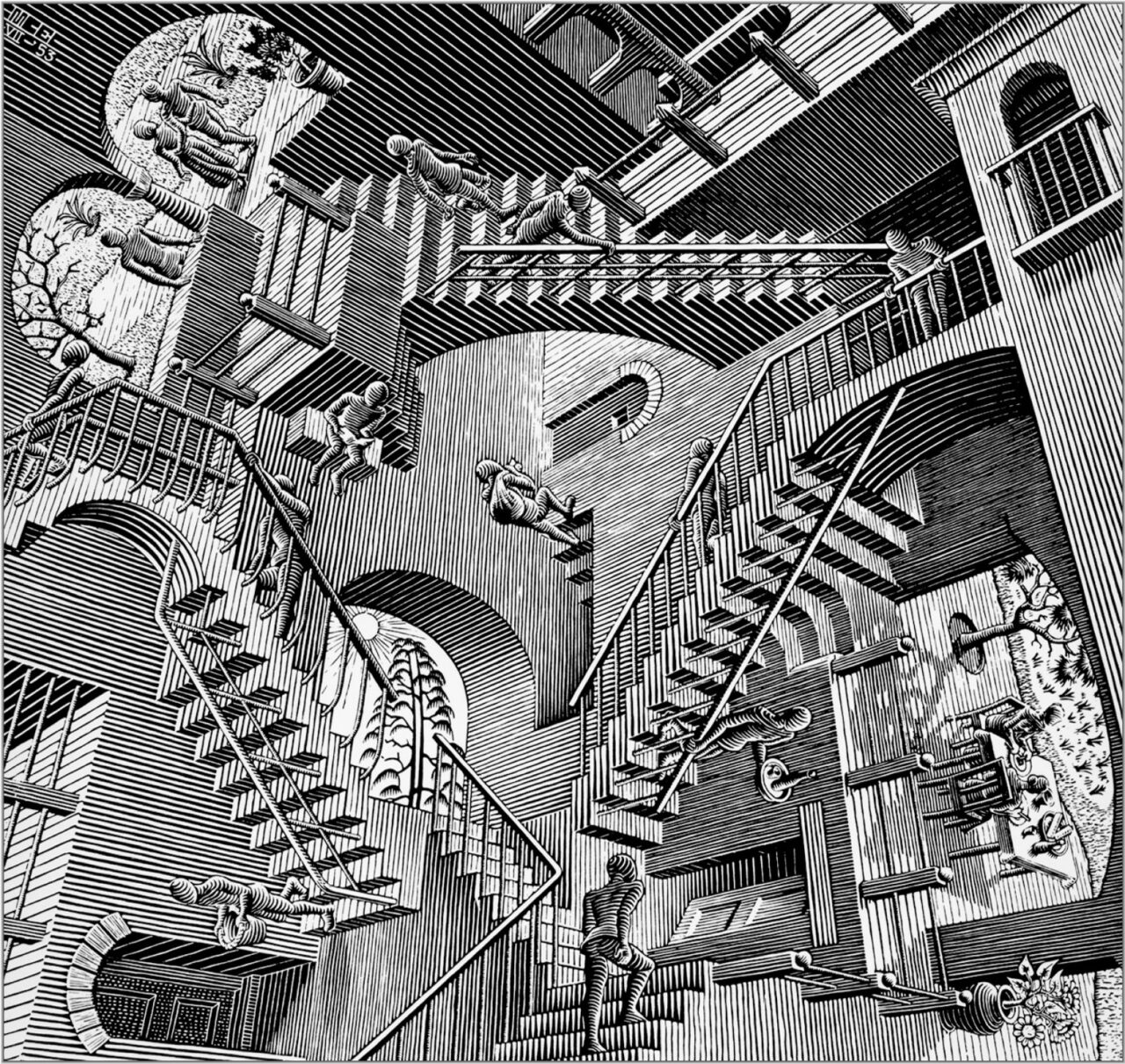A True Yunatic
Some artists don’t just draw pictures – they bend perception itself. M.C. Escher didn’t paint emotions or landscapes – he mapped the mind, traced infinity and sketched the places between logic and dream.
With pencils and precision, he built staircases that loop, hands that draw each other and worlds that fold back on themselves. Escher didn’t care for rules – he cared for rhythm, geometry and awe.
“Only those who attempt the absurd will achieve the impossible.” – M.C. Escher
The Inner Child
Escher’s inner child was a puzzlemaker and pattern-seer, hypnotized by tiles, reflections and shadows. He wasn’t interested in drawing what he saw – he drew what he imagined, even if it broke the rules of space and reason. That child stayed curious, always asking: What happens if up becomes down? What if perspective is a playground?
Tribbles
Escher’s tribbles ripple across art, math, architecture and philosophy:
- Influence on math & science – Escher’s work continues to inspire physicists, architects, coders and dreamers.
- Relativity (01953) – A world of endless staircases where gravity is optional.
- Hand with Reflecting Sphere (01935) – A self-portrait in a curved mirror – intimate and infinite.
- Metamorphosis series – A visual evolution from shape to shape, showing how the world is always becoming.
- Tessellations – Repeating patterns of birds, lizards and fish, interlocked like visual mantras.

Connected with the Yuniverse
Escher didn’t explain the universe – he dared us to see it differently. He believed that reality is flexible, perception is layered, and symmetry holds secrets. His art wasn’t abstract – it was a precise conversation with the infinite. He showed us that logic can be playful and mystery can be mathematical.
Spiritual
In the most geometric sense. Escher’s spirituality lived in patterns, paradox and balance. He found meaning in the spaces where things fold into each other – and where the impossible becomes familiar.
M.C. Escher reminds us that sometimes, the most beautiful truths are the ones that don’t quite make sense – and never needed to.nd endlessly explore.